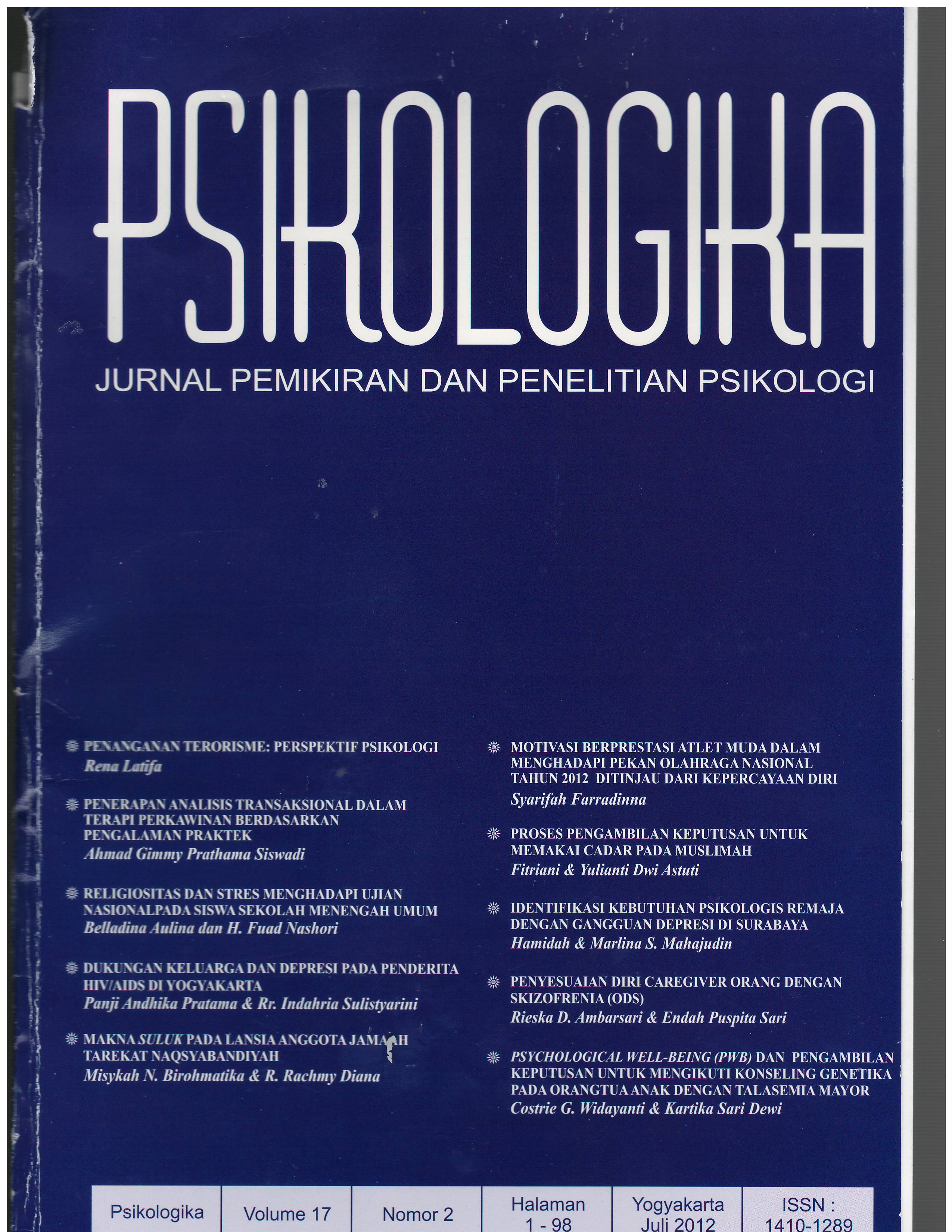Main Article Content
Abstract
This paper is a literature study on the roots of terrorism and alternative interventions that can be applied. The root of terrorism described in macro social standpoint, the system of government and politics, religion and ideology doctrination. Meanwhile, from the standpoint of the psychological explained about the special characters mediating the terrorist acts of aggressive behavior. The formation of social identity also participating whenever individual joined the terrorist organization. Intervention offered based on several literature findings. Jerrold (2005) focuses on preventing the entry of young people in a terrorist organization by the monitoring system of education, especially religious education. Rivera & Hancock (2003) mentions several psychological strategies in the fight against terrorism: the Anti-Terrorism, Counter-Terrorism, and Consequence Management. Woolf & Hulsizer (2005) offers a range of psychosocial model of primary prevention, secondary prevention and intervention.
Keywords: terrorism, terrorist, intervention
Article Details
Authors who publish with this journal agree to the following terms:
- Authors retain copyright and grant the journal right of first publication with the work simultaneously licensed under a Creative Commons Attribution-ShareAlike 4.0 International License that allows others to share the work with an acknowledgment of the work's authorship and initial publication in this journal.
- Authors are able to enter into separate, additional contractual arrangements for the non-exclusive distribution of the journal's published version of the work (e.g., post it to an institutional repository or publish it in a book), with an acknowledgment of its initial publication in this journal.
- Authors are permitted and encouraged to post their work online (e.g., in institutional repositories or on their website) prior to and during the submission process, as it can lead to productive exchanges, as well as earlier and greater citation of published work (See The Effect of Open Access).




